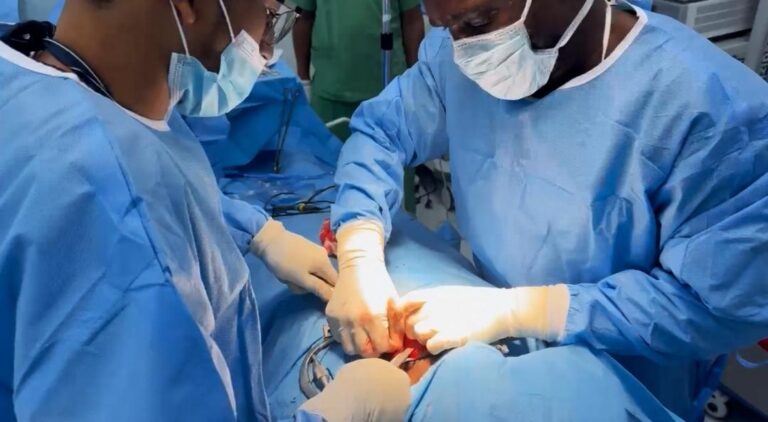Surgery. The word conjures images of intense focus, skilled hands, and life-altering interventions. But beneath the drama of the operating room lies a foundation built on centuries of learning, refinement, and unwavering commitment to core principles. These principles aren’t just academic concepts; they are the essential guideposts that every surgeon, from the seasoned veteran to the newest resident, relies upon to ensure patient safety, optimize outcomes, and navigate the inherent complexities of the human body.
Understanding these principles is crucial, not just for surgeons, but for anyone involved in patient care or simply fascinated by the art and science of healing. So, let’s delve into the fundamental tenets that make surgery possible and effective.
1. The Halstedian Principles: The Original Pillars (Still Standing Strong)
While surgery has evolved dramatically, the core tenets laid down by Dr. William Stewart Halsted in the late 19th and early 20th centuries remain remarkably relevant:
- Gentle Tissue Handling (Atraumatic Technique): This is paramount. Tissues are delicate. Rough handling, crushing with forceps, excessive pulling, or drying out causes inflammation, delays healing, and increases infection risk. Surgeons strive for meticulous gentleness, using fine instruments and moist sponges, minimizing unnecessary manipulation. Why it matters: Promotes faster healing, reduces scarring, lowers infection rates.
- Meticulous Hemostasis: Controlling bleeding is absolutely essential. Blood obscures the surgical field, making it difficult to see vital structures. Uncontrolled bleeding leads to shock and compromises patient safety. Surgeons use precise techniques like electrocautery, ligatures (ties), and clips to achieve a “dry field.” Why it matters: Ensures clear visibility, prevents life-threatening blood loss, reduces complication rates, speeds recovery.
- Strict Asepsis: Preventing infection is non-negotiable. This encompasses sterile technique (scrubbing, gowning, gloving, sterilizing instruments), maintaining a sterile field, and using prophylactic antibiotics appropriately. It’s a culture of vigilance against contamination. Why it matters: Surgical site infections (SSIs) are a major cause of morbidity, mortality, prolonged hospitalization, and increased costs.
- Preservation of Blood Supply: Tissues need oxygen and nutrients to survive and heal. Surgeons carefully dissect around blood vessels, avoid unnecessary ligation, and design incisions and tissue flaps to preserve their vital blood supply. Why it matters: Prevents tissue death (necrosis), ensures wound healing, reduces complications like wound breakdown.
- Anatomic Dissection & Tension-Free Closure: Surgery follows the natural planes and layers of the body whenever possible. This minimizes damage and bleeding. Closing wounds under excessive tension compromises blood flow and leads to poor healing or wound dehiscence (opening). Why it matters: Minimizes tissue trauma, optimizes wound healing, reduces scarring and complications.
2. Beyond Halsted: Foundational Concepts for Modern Surgery
While Halsted’s principles form the bedrock, modern surgery integrates several other crucial concepts:
- Thorough Preoperative Planning & Evaluation: Surgery doesn’t start in the OR. It begins with a comprehensive patient assessment: history, physical exam, diagnostics, risk stratification, optimization of comorbidities (like diabetes or heart disease), informed consent discussions, and choosing the most appropriate procedure and approach. Why it matters: Identifies risks, tailors the plan, sets realistic expectations, improves safety and outcomes.
- Sound Operative Strategy & Exposure: Having a clear, step-by-step plan is vital. Equally important is achieving adequate exposure – creating a surgical field large enough to see and work safely without causing unnecessary trauma. This often involves appropriate retraction and positioning. Why it matters: Allows for precise execution, minimizes errors, ensures all necessary steps are completed safely.
- Precise Dissection & Identification of Structures: Knowing anatomy inside-out is fundamental. Surgeons meticulously identify and differentiate between structures – nerves, vessels, ducts, organs – before cutting or manipulating them. “Know before you cut” is a golden rule. Why it matters: Prevents catastrophic damage to critical structures (e.g., cutting a nerve or major blood vessel).
- Removal of Devitalized Tissue & Foreign Bodies: Dead tissue and foreign material (like debris or non-absorbable suture fragments) are havens for infection and impede healing. Surgeons carefully debride (remove) such tissue during procedures, especially in trauma or infected cases. Why it matters: Reduces infection risk, promotes healthy healing.
- Safe Anesthesia & Physiological Monitoring: A skilled anesthesiologist is an indispensable partner. Maintaining stable physiology (blood pressure, oxygenation, fluid balance, temperature) throughout the operation is critical for patient safety and successful recovery. Why it matters: Protects vital organ function during the stress of surgery.
3. Modern Considerations: Evolving with Technology & Ethics
The core principles remain, but their application adapts:
- Minimally Invasive Techniques (Laparoscopic/Robotic): While still demanding gentleness, hemostasis, and asepsis, these approaches require specialized skills in remote manipulation, spatial awareness, and managing different instrumentation. The principles guide the adaptation of techniques.
- Enhanced Recovery After Surgery (ERAS): Protocols focusing on preoperative optimization, minimized fasting, multimodal pain control, early mobilization, and tailored fluid management are built upon the principles – gentle handling and preservation of physiology lead to faster recovery.
- Ethical Imperatives: Principles like beneficence (doing good), non-maleficence (do no harm), autonomy (informed consent), and justice (fair allocation of resources) are deeply intertwined with surgical practice. Every decision, from offering surgery to choosing a technique, involves ethical consideration.
- Teamwork & Communication: Surgery is a team sport. Clear communication among surgeons, anesthesiologists, nurses, and technicians is essential for safety and efficiency, directly impacting adherence to core principles (e.g., maintaining sterility, anticipating needs).
In Conclusion: The Unchanging Compass
The principles of surgery are not a rigid checklist, but a dynamic philosophy of care. They represent the distilled wisdom of generations, emphasizing respect for the patient’s body, meticulous attention to detail, and an unwavering commitment to safety and healing. While tools and techniques will continue to evolve at a breathtaking pace, these core tenets – gentle handling, controlling bleeding, preventing infection, preserving blood supply, careful dissection, and thorough planning – will forever remain the indispensable compass guiding the surgeon’s hand and ensuring the best possible outcomes for patients on the operating table. They are the true bedrock upon which the art and science of surgery stand.

